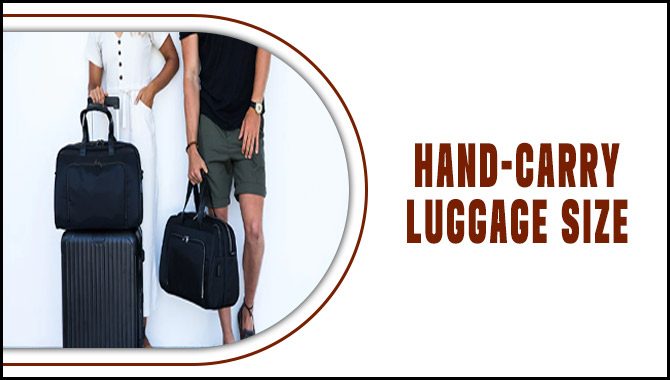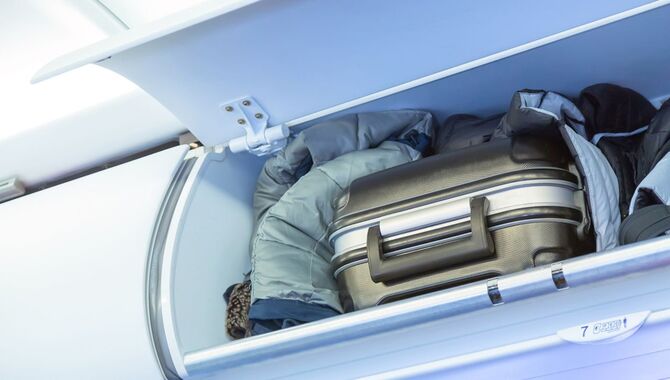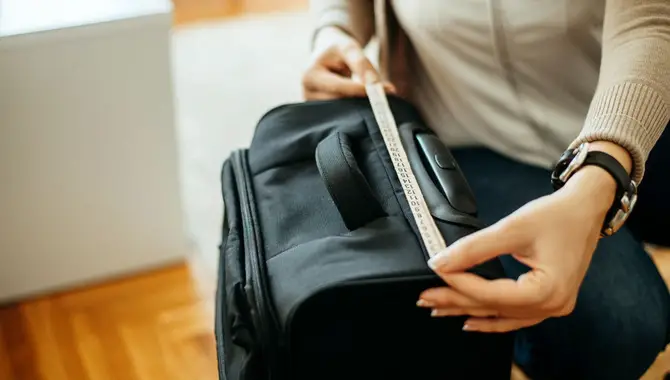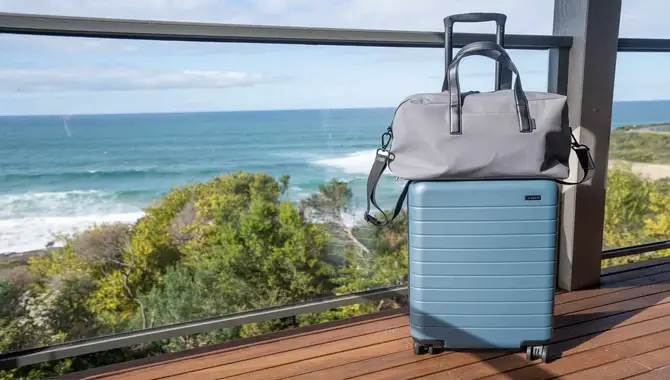Travelling can be both exciting and nerve-wracking, especially when it comes to packing. With so many luggage options available, it can be overwhelming to determine the best one for your trip.
Choosing the right hand-carry luggage size is crucial if you’re planning to travel light and avoid checking in your bags. Airlines have specific rules and restrictions regarding hand luggage, and failing to comply with their requirements can result in additional fees or even denied boarding.
Hence, it’s essential to understand the different hand-carry luggage sizes and their limitations before you set off on your next adventure. We’ll provide a comprehensive guide to help you choose the right hand-carry luggage size for your trip.
However, We’ll discuss airline regulations and restrictions, including weight limits, dimensions, and the number of bags allowed on board. We’ll also provide tips and tricks to help you pack efficiently and maximize your hand-carry luggage space.

Regulations And Standards For Hand-Carry Luggage Size

While preparing for air travel, it is crucial to comprehend regulations and standards for hand-carry baggage size across various airlines. It is also important to differentiate between international and domestic restrictions as they vary significantly.
Boarding with a carry-on bag, personal item or overhead bin should be well-planned by adhering to specific size requirements set by major airlines such as Delta, United, JetBlue, and Singapore Airlines, and budget airlines like Blue Basic.
Measures such as weighing the suitcase using ounces or kilograms, checking linear inches or overall dimensions in cm, and including weight restrictions must be followed. In addition to the carry-on policies set by various airlines, there are additional rules regarding items such as lithium batteries, firearms or sports equipment which must adhere to TSA guidelines.
Airlines’ Hand-Carry Luggage Size Limitations
When bringing hand-carry luggage on a flight, knowing airlines’ size limitations is essential. Most airlines require that carry-on bags not be larger than 22 inches long, 14 inches wide and 9 inches high, including handles and wheels. Additionally, the dimensions of personal items should not exceed 18 inches long, 14 inches wide, and 8 inches tall.
It is important to note that these size limitations may vary depending on the airline, so it’s always best to check with your specific carrier before packing your bags. Adhering to these guidelines ensures a smooth travel experience and avoids any potential issues at the gate.
The Allowed Dimensions For Hand-Carry Luggage

It’s crucial to remember that the allowed dimensions for hand-carry luggage are subject to change based on various factors, such as the airline and destination. As a general rule of thumb, most domestic and international carriers allow carry-on bags with a maximum size of 22 x 14 x 9 inches or 56 x 36 x 23 centimetres. Additionally, many airlines also impose weight restrictions on carry-on baggage.
To avoid any issues at the airport checkpoint, we recommend checking with your airline several days before your trip to confirm their specific requirements. By carefully packing within size and weight restrictions imposed by various airlines, you can travel worry-free with items like backpacks or briefcases while avoiding hefty checked-bag fees.
The Weight And Size Limit Of Hand-Carry Luggage
When travelling by aeroplane, knowing your carry-on bag’s weight and size restrictions is essential. Different airlines have various regulations, so checking their websites or contacting them directly before packing is crucial. Most airlines allow a maximum weight of 7-10kg and a size limit of 55x40x20cm for your carry-on bag.
Some budget airlines may have more minor size requirements or charge extra fees for larger carry-ons. Additionally, some airlines may restrict the number of items you can bring onboard as hand-carry luggage. Following these guidelines, you can avoid additional fees and maximise your travel carry-on allowance.
The Types Of Hand-Carry Luggage That Are Allowed

Travelling with hand-carry luggage is an excellent way to save time, money, and hassle at the airport. To ensure a smooth experience, knowing the types of hand-carry luggage that various airlines allow is essential. Most airlines permit one carry-on bag and one personal item like a briefcase or backpack. However, each airline has its specific size restrictions for these items.
For instance, United Airlines allows a maximum linear measurement of 62 inches for larger carry-on bags, while Delta Airlines permits up to 56 x 35 x 23 cm (22 x 14 x 9 inches). It’s also important to note that some airlines may have weight restrictions for carry-on baggage and personal items. Checking with your airline before packing can help avoid unwanted surprises at the checkpoint.
The Restrictions For Hand-Carry Luggage During Specific Times Of The Year
Travellers should be aware that hand-carry luggage size restrictions are subject to change depending on the airline and destination. Stricter regulations may be enforced during peak travel seasons to accommodate more passengers, so reviewing the airline’s guidelines is vital before packing. Efficient packing can aid in avoiding extra fees and improving travel comfort.
When travelling, passengers should remember baggage allowance rules for personal items, carry-on bags, checked baggage, and oversized items like sports equipment or musical instruments. Additionally, there may be restrictions on items such as aerosols, firearms, or lithium batteries when travelling internationally. Checking with your airline beforehand can help avoid potential problems at boarding or security checkpoints.
What Are The TSA Regulations For Carry-On Bags?

Per TSA regulations, passengers are allowed one carry-on bag and one personal item. Carry-on bags must not exceed 22x14x9 inches, and liquids should be in containers of 3.4 ounces or less and placed in a clear plastic bag. Prohibited items include firearms, sharp objects, and specific sports equipment.
Packing Dos And Don’ts For Hand-Carry Luggage
Ensure efficient packing for your next trip with these handy tips for hand-carry luggage. Pack only necessary items, such as versatile and lightweight clothing that can be mixed and matched. Optimize space using packing cubes or compression bags, but do not compromise on the weight limit set by various airlines like United, Delta, Singapore Airlines, JetBlue, etc.
Always check for the carry-on luggage size restrictions before boarding. Use personal item allowances like briefcases or backpacks with laptop pockets while carrying a giant carry-on suitcase or bag. Avoid overpacking and stick to the essentials to save money on baggage fees imposed by budget airlines like Blue Basic or Sun Country.
- Dos for packing hand-carry luggage
- Making a packing list
- Packing space-saving items
- Packing in layers
- Packing versatile clothing, e. Packing essential toiletries
- Don’ts for packing hand-carry luggage
- Overpacking
- Packing prohibited items
- Packing liquids above the allowed limit
- Packing bulky or heavy items, e. Packing valuables in checked luggage
Conclusion
Knowing the hand-carry luggage size guide is essential for any traveller who wants to avoid extra charges, delays, and inconvenience at the airport. Different airlines have their regulations for hand-carry luggage size, weight, and types. Therefore, it is important to check with your airline first before packing for your travel.
Also, remember that TSA has certain restrictions on what can be carried on board. To make your packing experience hassle-free and efficient, follow our dos and don’ts guide when it comes to packing your hand-carry luggage.
Remember to check your airline’s specific requirements before packing, and consider investing in a high-quality, lightweight carry-on suitcase that meets the standards. With a little planning and preparation, you can make your travel experience a breeze and focus on enjoying your destination.
Frequently Asked Questions
Can 24-Inch Luggage Be A Carry-On?
The acceptability of 24-inch luggage as a carry-on depends on the specific airline’s rules. Some airlines permit it, while others have stricter size limits. To avoid any last-minute surprises, always confirm with your airline beforehand. If you want to play it safe, opt for a smaller carry-on size, like 22 inches or less.
What Is Considered Hand Luggage?
Hand or carry-on luggage is a small bag or suitcase you can bring onto an aeroplane. Each airline has its own size and weight restrictions. Your hand luggage should fit in the overhead compartment or under the seat in front of you. Additionally, items like laptops, purses, or small backpacks may be allowed as well.
What Are The Standard Hand-Carry Luggage Size Restrictions For Different Airlines?
Hand-carry luggage size restrictions differ among airlines and can change often, so it’s advisable to check with the airline beforehand. The US standard is 22 x 14 x 9 inches for domestic flights, but international airlines may have different regulations. Some airlines impose weight restrictions in addition to size limitations.
What Items Should I Prioritize Packing In My Hand-Carry Luggage?
When packing your hand-carry luggage, prioritize essential travel documents, valuables like cash and electronics, personal hygiene items, a change of clothes, and necessary medications. This ensures that you have everything you need to stay comfortable and safe during your journey in case of lost or delayed checked baggage.
Can I Bring Liquids In My Hand-Carry Luggage?
You can bring liquids in your hand-carry luggage, but there are limitations. Liquids must be in 3.4 ounces (100 millilitres) or smaller containers and placed in a clear quart-sized bag. Each passenger is allowed only one bag of liquids. However, exceptions can be made for medications, baby formula, and breast milk, which can be carried in larger amounts.
